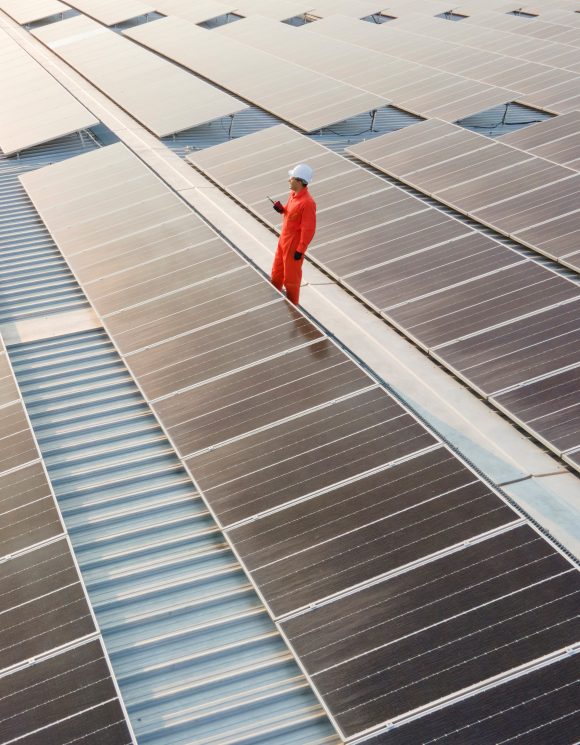We’re here for you
Arrange an appointment for a non-binding consultation or if you have any questions, just give us a call.

![]()
header.search.error
Climate-friendly renovation in six steps
Energy-efficient renovation is often worthwhile – but what does it actually involve? You can find out how best to put energy-saving investments into practice in our guide “Climate-friendly renovation – a guide in six steps”.
Content:

Step 1: Determine your needs and preferences
Successful renovation does not begin with the start of construction work, but around six months beforehand. Experience shows that this is how long it takes to prepare. There are several steps to complete in advance, including drawing up a renovation plan, obtaining financing and subsidies, applying for permits and involving experts.
Take the first step by deciding on the extent of the renovation. Start by assessing your property. Think about what you hope to gain from a renovation and how the building will be used in the future. Is the aim of the renovation to save energy and use environmentally friendly energy sources? Or are you simply replacing elements and making the property more accessible to the elderly?
Step 2: Understand your renovation options
Before you decide on the extent of the renovation, you should obtain an overview of the technical and design options that modern building technology offers you. Did you know that improved insulation and thicker windows can help you to save up to 50 percent on heating costs? Or that the most ecological and, in the long term, most cost-effective heating system is the combination of a heat pump with a photovoltaic system, a well-established technical solution that has been around for 40 years?
Try and think ahead when carrying out climate-friendly renovation. Can you make other changes at the same time, such as installing sun and heat protection? Or can you take measures to make the property more accessible to the elderly and disabled? The following principle applies: the more you renovate your property, the higher the costs in the short term. However, it still makes sense to coordinate all your renovation work. This approach also helps exploit synergies and avoid mistakes.
Step 4: Draw up a renovation plan
If you take the time to prepare the construction project thoroughly, you will avoid having to make changes and improvements later on. These are often particularly costly and usually delay completion. As well as saving money, you can achieve higher quality by planning work in advance, as your preferences and the various options can all be taken into account. Talk to your neighbors during this phase.
They may be able to give you helpful advice. A coordinated renovation project could save money for all the parties involved.
In some cases, you will need a renovation plan before you can apply for subsidies or a renovation mortgage and obtain cost estimates and permits.
Step 5: Mortgage, permits and subsidies
Most property owners do not pay for energy-efficient renovations directly out of pocket. With a mortgage, the costs of the renovation are spread over part or all of the property’s useful life. UBS offers two mortgage products at preferential conditions for energy-related renovations: “UBS Mortgage Energy” for the replacement of heating systems and the installation of a photovoltaic system, and “UBS Mortgage Renovation” for comprehensive renovations.
Before starting construction, you will need to apply for the necessary permits and subsidies in addition to the mortgage. Ask your local authority which building permits or concessions are required. The federal government and cantons help to cover overall costs through subsidies and tax breaks. If you apply for subsidies at www.dasgebaudeprogramm.ch in your canton , wait to receive confirmation before construction starts.
Step 6: Perform the work
Once the preparations are complete, the construction project can begin. Whether you have decided to do some of the work yourself or to commission an architectural office or a specialist company, you should always allow enough time. You should expect comprehensive renovation work to take from six to twelve months. Stay in regular contact with the construction manager throughout so that you can address and correct errors and defects at an early stage. After completion of the project, you and the construction manager will confirm acceptance of the works. Once you have a full statement of the construction costs, subsidies can be paid out and the mortgage conditions agreed.

The more thorough the preparations, the smoother the energy-efficient renovation project: this is the best way to summarize the six steps outlined in our guide to climate-friendly renovation. Don’t be afraid to seek professional assistance – for planning, implementation and financing.
Arrange an appointment for a non-binding consultation or if you have any questions, just give us a call.
Disclaimer